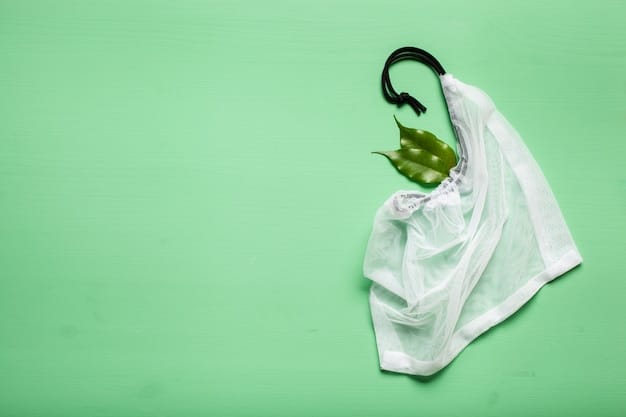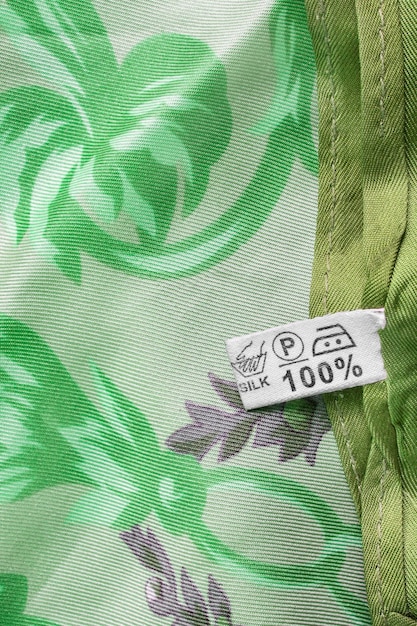Shein’s Sustainable Choices: A Smart Shopper’s Eco-Guide

Shein’s Sustainable Choices: A Smart Shopper’s Guide to Eco-Friendly Options explores the steps Shein is taking toward sustainability, providing insights for conscious consumers to make informed choices while shopping with the fast-fashion giant.
Navigating the world of fast fashion can be tricky, especially when you’re trying to make Shein’s Sustainable Choices: A Smart Shopper’s Guide to Eco-Friendly Options. This guide breaks down Shein’s efforts towards sustainability and helps you, the smart shopper, make more environmentally conscious decisions.
Understanding Shein’s Sustainability Initiatives
Shein, a global fast-fashion giant, has come under scrutiny for its environmental impact. However, the company has begun to implement various sustainability initiatives to address these concerns. Understanding these initiatives is the first step in making informed shopping decisions.
Shein’s Roadmap to Sustainability
Shein has outlined a roadmap that includes several key areas, such as responsible sourcing, reducing waste, and promoting ethical production. These efforts are aimed at minimizing the company’s environmental footprint and contributing to a more sustainable fashion industry.
Key Programs and Certifications
Shein has implemented several programs and certifications to support its sustainability goals. These include partnerships with organizations focused on environmental protection and the use of certified sustainable materials in its products.
- Responsible Sourcing: Shein is committed to sourcing materials from suppliers who adhere to ethical and environmental standards.
- Waste Reduction: The company is exploring ways to minimize waste throughout its supply chain, from production to packaging.
- Sustainable Materials: Shein is increasing its use of recycled and other sustainable materials in its clothing and accessories.
- Transparency: Shein aims to provide greater transparency about its sustainability efforts and supply chain practices.
By understanding Shein’s sustainability initiatives, shoppers are better equipped to make choices that align with their values. It’s essential to remain critical yet informed, encouraging Shein to continue improving its practices.
Decoding Product Labels: What to Look For
One of the most effective ways to make eco-friendly choices when shopping at Shein is to carefully examine product labels. These labels often provide valuable information about the materials used and the sustainability practices employed in the production of the garment.

Understanding Fabric Composition
Pay attention to the fabric composition listed on the label. Look for materials like organic cotton, recycled polyester, and other sustainable alternatives. These materials have a lower environmental impact compared to conventional fabrics.
Certifications and Standards
Certifications like GOTS (Global Organic Textile Standard) and Oeko-Tex indicate that the product has been tested for harmful substances and meets certain environmental and social standards. Look for these certifications to ensure the product is truly eco-friendly.
When evaluating product labels, consider these points:
- Organic Cotton: Grown without synthetic pesticides and fertilizers.
- Recycled Polyester: Made from recycled plastic bottles, reducing waste.
- Tencel/Lyocell: Produced from sustainably sourced wood pulp.
- Linen: A natural fiber that requires less water and pesticides than cotton.
Decoding product labels empowers shoppers to make informed decisions and support sustainable practices. By choosing products with eco-friendly materials and certifications, you can reduce your environmental footprint and promote responsible fashion consumption.
Spotting “Greenwashing”: Separating Fact from Fiction
Greenwashing is a deceptive marketing tactic used by companies to present a false image of environmental responsibility. It’s crucial to be aware of greenwashing to avoid being misled and to make genuine sustainable choices.
Common Greenwashing Tactics
Companies often use vague or unsubstantiated claims to appear eco-friendly. Look out for terms like “eco-friendly” or “sustainable” without specific details or certifications to back them up.
How to Identify Misleading Claims
Verify claims by checking for independent certifications and credible sources. If a company’s claims seem too good to be true, they probably are. Always do your research and look for transparency.

Here are some red flags that may indicate greenwashing:
- Vague Language: Claims that are not specific or measurable.
- Lack of Transparency: Limited information about the company’s sustainability practices.
- Irrelevant Claims: Highlighting a small eco-friendly aspect while ignoring larger environmental issues.
- False Labels: Using fake or misleading certifications.
By being vigilant and critical, you can avoid falling for greenwashing and support companies that are truly committed to sustainability. Informed consumers drive demand for transparency and genuine eco-friendly practices.
Making Conscious Purchasing Decisions
Making conscious purchasing decisions involves considering the environmental and social impact of your purchases. It’s about being mindful of your consumption and choosing products that align with your values.
Prioritizing Quality over Quantity
Instead of buying multiple cheap items, invest in fewer, higher-quality pieces that will last longer. This reduces waste and promotes a more sustainable approach to fashion.
Considering the Lifecycle of a Garment
Think about what will happen to the garment after you no longer want it. Can it be recycled, upcycled, or donated? Choosing durable and versatile items can extend their lifecycle and reduce waste.
To make more conscious purchasing decisions, consider the following:
- Buy Less: Reduce your overall consumption and only purchase what you truly need.
- Choose Quality: Invest in durable, well-made items that will last longer.
- Support Sustainable Brands: Look for brands that prioritize environmental and social responsibility.
By making conscious purchasing decisions, you can minimize your environmental impact and support a more sustainable fashion industry. Every small choice makes a difference when it comes to creating a better future.
Extending the Life of Your Shein Clothing
One of the most effective ways to reduce the environmental impact of your clothing is to extend its life. Proper care, repair, and creative reuse can significantly prolong the lifespan of your garments.
Proper Care and Maintenance
Follow the care instructions on the label to ensure your clothing stays in good condition. Proper washing, drying, and storage can prevent damage and extend the life of your garments.
Repair and Upcycling Techniques
Learn basic sewing skills to repair minor damages like tears or loose buttons. Upcycling involves transforming old clothing into new items, giving them a new lease on life.
Here are some tips for extending the life of your Shein clothing:
- Wash Carefully: Use cold water and gentle detergents.
- Air Dry: Avoid using the dryer, which can damage fabrics and shorten their lifespan.
- Repair Promptly: Fix small damages before they become bigger problems.
- Upcycle Creatively: Turn old clothes into new items like bags, quilts, or accessories.
By extending the life of your clothing, you reduce waste and minimize the need for new purchases. This simple yet effective approach contributes to a more sustainable and circular fashion system.
Advocating for Change: Engaging with Shein and Other Brands
As consumers, we have the power to advocate for change by engaging with brands and demanding more sustainable practices. By voicing our concerns and supporting responsible companies, we can drive positive change in the fashion industry.
Communicating Your Expectations
Let Shein and other brands know that you value sustainability. Use social media, email, or customer surveys to communicate your expectations for eco-friendly practices and transparency.
Supporting Sustainable Alternatives
Choose to support brands that prioritize sustainability and ethical production. By directing your spending towards responsible companies, you incentivize others to follow suit.
Here are some ways to advocate for change:
- Contact Brands: Express your concerns and expectations for sustainability.
- Use Social Media: Share your thoughts and engage in discussions about sustainable fashion.
- Support Responsible Companies: Choose brands that prioritize environmental and social responsibility.
By advocating for change, you can help shape the future of the fashion industry and promote a more sustainable and ethical approach to production and consumption. Collective action is key to driving meaningful progress.
| Key Point | Brief Description |
|---|---|
| 🌱 Eco-Friendly Labels | Check for organic, recycled, or sustainable materials. |
| 🔍 Avoid Greenwashing | Beware of vague claims; look for certifications. |
| 👚Extend Clothing Life | Proper care, repair, and upcycling help reduce waste. |
| 📣 Advocate for Change | Engage with brands, support sustainable practices. |
Frequently Asked Questions
▼
Shein is taking steps towards sustainability, but it still has a long way to go. They are implementing initiatives like responsible sourcing and using recycled materials, but transparency and comprehensive change are still needed.
▼
Look for certifications like GOTS (Global Organic Textile Standard) and Oeko-Tex. These certifications ensure that the products have been tested for harmful substances and meet certain environmental and social standards.
▼
Beware of vague claims like “eco-friendly” without specific details. Verify claims by checking for independent certifications and credible sources. Always look for transparency in their sustainability practices.
▼
Sustainable materials include organic cotton, recycled polyester, Tencel/Lyocell, and linen. These materials have a lower environmental impact compared to conventional fabrics, making them better choices.
▼
Follow care instructions, wash carefully, air dry, and repair promptly. Upcycling old clothes into new items also helps extend their life, reducing waste and promoting a more sustainable approach.
Conclusion
By understanding Shein’s sustainability initiatives, decoding product labels, avoiding greenwashing, making conscious purchasing decisions, extending the life of your clothing, and advocating for change, you can navigate Shein’s offerings as a smart and eco-conscious shopper. Your choices matter in fostering a more sustainable fashion industry.





